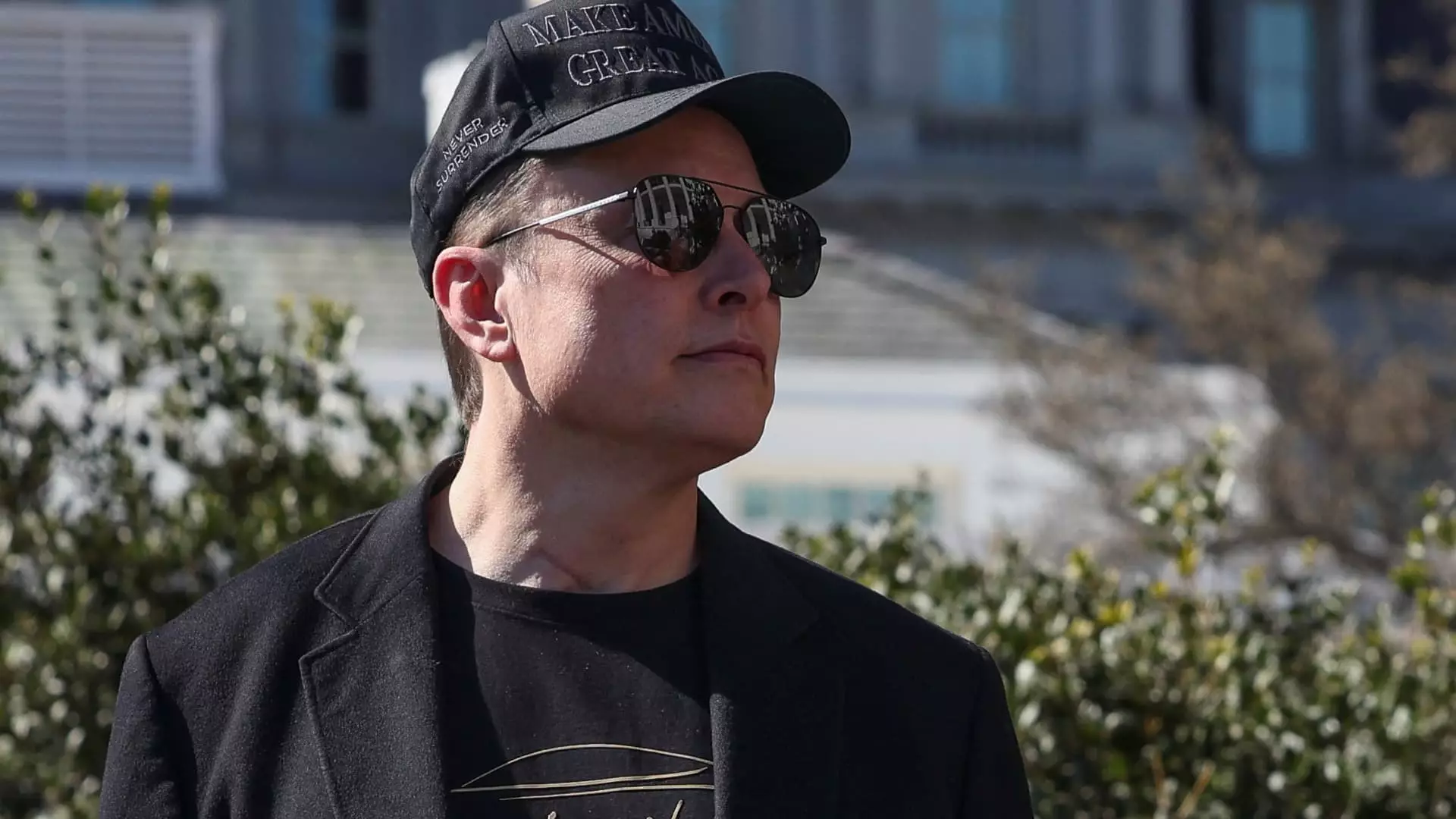Tesla, an unparalleled titan in the electric vehicle (EV) industry, recently unveiled its first-quarter earnings report, and the results were nothing short of catastrophic. The company experienced a shocking 71% drop in net income, plummeting from $1.39 billion to a mere $409 million. This staggering decline in profitability is indicative of an organization grappling with multiple issues: from waning demand in a competitive marketplace to challenges in its manufacturing processes. The adjusted earnings per share fell drastically to 27 cents, a disheartening contrast to the expected 39 cents. Such disappointing numbers raise questions about Tesla’s long-term viability and its ability to maintain its market leader status.
Moreover, automotive revenues contracted 20% from the previous year, sinking to $14 billion from $17.4 billion. For a brand that once soared on the wings of hype and innovation, this substantial decline raises eyebrows, prompting analysts and investors alike to reconsider Tesla’s growth trajectory. As a company that championed itself as the harbinger of a new automotive era, can it still maintain this narrative amidst spiraling figures?
External Pressures: The Political Quagmire
Adding to an already precarious situation, Tesla finds itself in the crosshairs of political machinations. With CEO Elon Musk preoccupied by his role in the Trump administration’s initiative to downsize government, crucial resources may be diverted from Tesla’s core operations. Their plea for “uncertainty in the automotive and energy markets” is not merely a corporate cliché; it’s a genuine reflection of treacherous waters, driven by rapidly evolving trade policies. The resultant tariffs could compel Tesla to raise prices drastically, alienating cost-sensitive customers and harming sales further.
What rattles the cage even more is Musk’s controversial support for Germany’s far-right AfD party, a move that sits uncomfortably with the progressive ideals many Tesla supporters once embraced. The company’s ambivalence to a changing political landscape and social unrest could turn loyal customers into skeptics, prompting an exodus of the very consumer base it relies upon for growth. The lack of a cohesive political strategy may leave Tesla vulnerable when faced with passionate protests in both the U.S. and Europe.
Competition: The New Kids on the Block
As if internal strife and external pressures weren’t enough, Tesla has increasingly found itself in a dogfight with lower-cost competitors, especially those hailing from China. With emerging brands offering far more affordable electric alternatives, the question arises: Can Tesla maintain its premium pricing when cheaper options are appealing to the price-sensitive consumer? The company has a lot to prove, especially against established players like Alphabet’s Waymo, which leads in the robotaxi space—a field that Tesla has yet to make significant waves in.
The recent decline in deliveries—down 13% year-over-year—signifies a troubling trend that could disillusion investors. Will Tesla become the proverbial tortoise in a hare’s race against more agile competitors who are adapting their strategies to allure a fresher demographic? The company’s shocked reassurances regarding pilot launches in the self-driving market in Austin could very well be too little too late if competitors seize the day.
The AI Dilemma: A Double-Edged Sword
In an ambitious pivot to artificial intelligence and robotics, Tesla has ramped up spending on AI projects, yet this has further strained operating income, which saw a staggering 66% decline. The operating margin dropping to 2.1% signals a troubling shift, prompting serious questions about the utility of such investments during a tumultuous business cycle.
While Tesla paints a rosy picture of AI as a stabilizing force for its energy generation and storage segments—outpacing growth at 67%—it’s hard to overlook the painful paradox: excessive spending on futuristic technologies seems eerily premature in light of more pressing financial challenges. Forcing the issue of operational expansion when fundamental core functions are suffering might not only backfire but could lead the company down a path of unsustainable growth.
Regulatory Credits: A Lifeline or a Crutch?
The reliance on environmental regulatory credits for survival raises a critical dilemma for Tesla. While it successfully extracted $595 million from these credits in the recent quarter, it begs the question: How long can this financial crutch sustain the company? If the electric vehicle market matures, and such credits become less prevalent, what will be left for Tesla to cushion its revenue? Are we witnessing the unraveling of a fragile business model, one that assumes a perpetual need for regulatory credits to remain afloat?
Tesla’s troubles serve as a crucial reminder that even innovators can stumble. The electric vehicle market may indeed be the future, but who will control that future? Leaders like Tesla must rise to meet the challenges head-on if they hope to maintain their foothold in this transformative yet unforgiving landscape.

